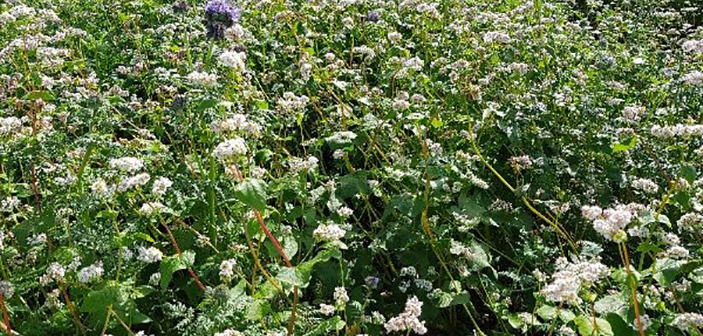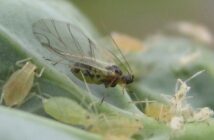Vining peas can yield up to 1.5 tonnes per hectare more if they are planted after a cover crop, work carried out by the Processors and Growers Research Organisation and the Green Pea Company (GPC) has shown.
Increased soil moisture retention during dry periods in the spring and summer is believed to be a key contributing factor, driven by cover crops’ ability to improve overall soil structure.
The new data comes after five years of trials in the east of England by the PGRO in partnership with GPC, Birdseye, HMC and Elsoms.
The work demonstrated that a well-established cover crop containing the appropriate species would generally result in higher yielding vining peas.
While evidence of a potential yield uplift is welcome, the PGRO’s Principal Technical Officer Tom Jelden said it is only one important consideration.
He said: “The key point is that we have determined how to used cover crops successfully before peas. Their benefits to soil health are well documented, and at a time when farmers are focusing more on protecting their natural resources, we hope our findings will help inform them on how to integrate cover crops into their system before drilling peas.
“We have frequently recorded better soil structure in land that was previously cover cropped, even if the land was heavily tilled since. This leads to increased soil moisture retention throughout the growing season – ideal for vining peas, which are extremely vulnerable to poor rooting environments, moisture stress and compaction.
“In land that had been cover cropped under either light or heavy cultivation strategies compared to fallowed counterparts, moisture was retained through what was a dry spring and the impact of flooding was reduced following a summer deluge where a cover crop was used.”
Environmental benefits
During the trials, the cover crops captured high levels of soil mineral nitrogen.
“They amassed in excess of 50kg of nitrogen per hectare over winter and even over 100kg per hectare in a catch crop following peas,” Tom added.
“However, this nitrogen saved over winter did not benefit vining pea development which, under normal circumstances, requires no nitrogen inputs whatsoever. The trials did demonstrate that about 10-30kg of nitrogen can be omitted from cereal inputs when a catch crop was planted in the summer after peas.
“It has shown how effective cover crops are at assimilating nitrates that would otherwise leach into waterways and groundwater, and they have obvious merits in terms of environmental and water protection.”
Protection against foot rot
The trials are understood to be the first field studies to demonstrate a link between legume species berseem clover and winter vetch and the reduction of foot rot risk in following vining peas. Previously, it has been speculated that legume species would increase the risk of foot rot.
Tom said: “A cover crop preceding peas would be ideally dominated by black or spring oats, which have shown the best results in terms of effects on yield and foot rot, and can be accompanied by species including, phacelia, linseed, borage, mustard, berseem clover and winter vetch.
“Oil radish, however, was shown to aggravate pea foot rot which contradicts what has been demonstrated in lab and glasshouse studies. This has been demonstrated with three very different foot rot species, Aphanomyces euteiches, Fusarium solani and Didymella pinodella.”
The PGRO advises that prompt establishment and destruction of cover crops is essential.
Ideally, a cover crop should be drilled in August and preferably into some moisture, with care taken to adjust drilling depth and rates according to species used. A small amount of starter N, about 10-15kg per hectare or lower, can also be useful for accelerating establishment in later drilled cover crops.
“Growers should aim to have highly deteriorated residues by the time of drilling to help soil moisture to stabilise, allow time for pests like slugs and aphids to vacate, and reduce the risk of bean seed fly in the following peas,” Tom said.
“If spraying off, wait for good conditions and do whatever else you can to maximise efficacy. If flailing or rolling, ensure that you aren’t leaving significant compaction in your wake.”
To read Tom’s work in full, visit the PGRO website and to watch his cover cropping masterclass video, visit the PGRO’s YouTube channel.




